As Mt Fuji is for the Japanese, so is Mt. Ararat for the Armenians. That is how many books about Armenia introduce the relationship between the country and the mountain. As a national symbol, it is revered and is often depicted on everyday items and souvenirs. It also has religious significance for it is named after the biblical mountains where Noah's ark is supposed to have come to rest after the great flood.
Interestingly while Ararat (5137m) looms over the central part of the country and is even visible from Yerevan, it does not actually lie within Armenia at all
. It lies inside neighboring Turkey and this is a source of anguish for many Armenians. But there are great views of the mountain to be had from within Armenia and our decision to visit the Khor Virap monastery on a clear day with blue skies was largely influenced by its location at the foot of the mountain.
Located in the Ararat region about 50 kms south of Yerevan, the monastery's history is closely connected with the nation's adoption of Christianity and its subsequent religious and cultural development. Khor Virap means "deep well" and according to legend, the pagan King Trdat III imprisoned St Gregory the Illuminator (Surp Grigor Lusavorich) in a well here for 12 years, where he was secretly fed by Christian women. The king was later cursed by madness and was miraculously cured by St. Gregory leading to conversion of the king and Armenia into the very first officially Christian nation in the world in year 301. St Gregory became the first Catholicos (equivalent of the Pope) of the Armenian Apostolic Church and was responsible spreading the faith and initiating the building of several churches on top of pagan temples
.
The monastery itself is on a hillock and after we toured the buildings in the monastery complex, we climbed to the highest point behind it for a panoramic view of the twin peaks of Mt Ararat, the pastures in the foreground, and the contentious border between Armenia and Turkey running between the two.
The second monastery we visited on the same day was Noravank (New Monastery) that is located in the Vyots Dzor region southeast of Yerevan. It was founded in the 13th century and its spectacular setting is also the reason for its popularity.
The road to the monastery winds through a narrow gorge making even the approach to it quite dramatic. The monastery itself stands grandly against red rock cliffs in the background. One of the primary buildings in the church complex is the 1339 St. Astvatsatsin sepulchre-church, a three-story building that is considered an architectural masterpiece and was the last significant work done by the 14th century artist, sculptor and architect Momik, who is buried next to it
. The facade of the church has bas-relief sculptures. Narrow stairs lead up to the second floor which is the actual church. (We were told that this was deliberately made difficult as the getting to heaven is not easy!) The church is topped by a dome that is supported by an open air rotunda making it well-lit and airy. While the central church, St Astvatsatsin, is not in use, some other churches in the complex are still functioning churches. There are some exquisitely carved stone crosses (khachkars) that lie around each of these churches and some of them have very elaborate carvings on them.
In the same province, further east of Noravank, is the village of Areni which is best known for its winery and it was our last stop for the day. We tasted several red wines from the last few years vintage (good, but not great) but more interesting was their collection of fruit vodkas (called oghi) which included grapes, plum and pomegranate varieties. At 55% alcohol content, even a little sip of each is strong enough to raise the dead!
Google Maps Link
Two Monasteries And A Winery
Monday, October 29, 2012
 Areni, Vayotsʼ Dzor, Armenia
Areni, Vayotsʼ Dzor, Armenia
Other Entries
-
73The Border Crossing You Dont Want To Repeat
Sep 2930 days prior Tashkent, Uzbekistanphoto_camera5videocam 0comment 4
Tashkent, Uzbekistanphoto_camera5videocam 0comment 4 -
74Some History Lessons
Oct 0227 days prior Tashkent, Uzbekistanphoto_camera5videocam 0comment 2
Tashkent, Uzbekistanphoto_camera5videocam 0comment 2 -
75From Slave Market to Museum
Oct 0425 days prior Khiva, Uzbekistanphoto_camera14videocam 0comment 1
Khiva, Uzbekistanphoto_camera14videocam 0comment 1 -
76How Much Renovation is Just Right?
Oct 0623 days prior Bukhara, Uzbekistanphoto_camera32videocam 0comment 3
Bukhara, Uzbekistanphoto_camera32videocam 0comment 3 -
77Timur Land
Oct 0920 days prior Samarkand, Uzbekistanphoto_camera28videocam 0comment 1
Samarkand, Uzbekistanphoto_camera28videocam 0comment 1 -
78Goodbye To The 'Stans
Oct 1019 days prior Tashkent, Uzbekistanphoto_camera6videocam 0comment 2
Tashkent, Uzbekistanphoto_camera6videocam 0comment 2 -
79Still In Asia Or Is This Europe?
Oct 1316 days prior Baku, Azerbaijanphoto_camera28videocam 0comment 1
Baku, Azerbaijanphoto_camera28videocam 0comment 1 -
80Foothills Of The Caucasus Mountains
Oct 1415 days prior Lahic, Azerbaijanphoto_camera16videocam 0comment 2
Lahic, Azerbaijanphoto_camera16videocam 0comment 2 -
81Vikings Originally Came From Azerbaijan?
Oct 1613 days prior Sheki, Azerbaijanphoto_camera13videocam 0comment 1
Sheki, Azerbaijanphoto_camera13videocam 0comment 1 -
82An Azerbaijani Family
Oct 1613 days prior Sheki, Azerbaijanphoto_camera0videocam 0comment 3
Sheki, Azerbaijanphoto_camera0videocam 0comment 3 -
83A Change of Faith
Oct 1910 days prior Tbilisi, Georgiaphoto_camera16videocam 0comment 3
Tbilisi, Georgiaphoto_camera16videocam 0comment 3 -
84Dzhugashvili and Svetitskhoveli
Oct 209 days prior Gori, Georgiaphoto_camera17videocam 0comment 2
Gori, Georgiaphoto_camera17videocam 0comment 2 -
85A Border Runs Through It
Oct 218 days prior Davit Gareja, Georgiaphoto_camera15videocam 0comment 2
Davit Gareja, Georgiaphoto_camera15videocam 0comment 2 -
86In the Greater Caucasus Mountains
Oct 236 days prior Qazbegi, Georgiaphoto_camera15videocam 0comment 1
Qazbegi, Georgiaphoto_camera15videocam 0comment 1 -
87The Pink Capital of Armenia
Oct 263 days prior Yerevan, Armeniaphoto_camera22videocam 0comment 2
Yerevan, Armeniaphoto_camera22videocam 0comment 2 -
88Colors Of The North - Dilijan and Lake Sevan
Oct 272 days prior Dilijan, Armeniaphoto_camera14videocam 0comment 2
Dilijan, Armeniaphoto_camera14videocam 0comment 2 -
89The Armenian Apostolic Church
Oct 281 day prior Echmiadzin, Armeniaphoto_camera13videocam 0comment 0
Echmiadzin, Armeniaphoto_camera13videocam 0comment 0 -
90Two Monasteries And A Winery
Oct 29 Areni, Armeniaphoto_camera9videocam 0comment 0
Areni, Armeniaphoto_camera9videocam 0comment 0 -
91Tatev (Give Me Wings)
Oct 301 day later Goris, Armeniaphoto_camera10videocam 0comment 0
Goris, Armeniaphoto_camera10videocam 0comment 0 -
92The Nagarno Karabakh Republic
Oct 312 days later Stepanakert, Azerbaijanphoto_camera18videocam 0comment 2
Stepanakert, Azerbaijanphoto_camera18videocam 0comment 2 -
93Homer in Turkish
Nov 013 days later Tbilisi, Georgiaphoto_camera1videocam 0comment 1
Tbilisi, Georgiaphoto_camera1videocam 0comment 1 -
94From Caspian Sea To Black Sea
Nov 035 days later Batumi, Georgiaphoto_camera11videocam 0comment 1
Batumi, Georgiaphoto_camera11videocam 0comment 1 -
95A Short Distance, But A World Apart
Nov 046 days later Trabzon, Turkeyphoto_camera16videocam 0comment 1
Trabzon, Turkeyphoto_camera16videocam 0comment 1 -
96Rock-cut Tombs and a Deep Valley
Nov 068 days later Amasya, Turkeyphoto_camera11videocam 0comment 3
Amasya, Turkeyphoto_camera11videocam 0comment 3 -
97Cold and Rainy in the Capital
Nov 0810 days later Ankara, Turkeyphoto_camera14videocam 0comment 4
Ankara, Turkeyphoto_camera14videocam 0comment 4 -
98Ottoman Architecture and Computer Architecture
Nov 1012 days later Safranbolu, Turkeyphoto_camera15videocam 0comment 2
Safranbolu, Turkeyphoto_camera15videocam 0comment 2 -
99Fairy Chimneys and Whirling Dervishes
Nov 1214 days later Goreme, Turkeyphoto_camera26videocam 0comment 6
Goreme, Turkeyphoto_camera26videocam 0comment 6 -
100Turquoise Coast
Nov 1517 days later Fethiye, Turkeyphoto_camera18videocam 0comment 2
Fethiye, Turkeyphoto_camera18videocam 0comment 2 -
101Aphrodisias
Nov 1719 days later Geyre, Turkeyphoto_camera21videocam 0comment 6
Geyre, Turkeyphoto_camera21videocam 0comment 6 -
102Hierapolis
Nov 1820 days later Pamukkale, Turkeyphoto_camera22videocam 0comment 2
Pamukkale, Turkeyphoto_camera22videocam 0comment 2 -
103Ephesus - Three in a row!
Nov 1921 days later Selcuk, Turkeyphoto_camera25videocam 0comment 3
Selcuk, Turkeyphoto_camera25videocam 0comment 3 -
104Smyrna - Running on empty and a wild goose chase
Nov 2022 days later İzmir, Turkeyphoto_camera16videocam 0comment 1
İzmir, Turkeyphoto_camera16videocam 0comment 1 -
105Finally in Istanbul!
Nov 2123 days later Istanbul, Turkeyphoto_camera23videocam 0comment 1
Istanbul, Turkeyphoto_camera23videocam 0comment 1 -
106The Seat of Ottoman Power
Nov 2325 days later Istanbul, Turkeyphoto_camera19videocam 0comment 3
Istanbul, Turkeyphoto_camera19videocam 0comment 3 -
107Both Ancient and Modern
Nov 2527 days later Istanbul, Turkeyphoto_camera26videocam 0comment 1
Istanbul, Turkeyphoto_camera26videocam 0comment 1 -
108You know you are in Europe when...
Nov 2628 days later Thessaloniki, Greecephoto_camera27videocam 0comment 3
Thessaloniki, Greecephoto_camera27videocam 0comment 3

 Areni, Vayotsʼ Dzor, Armenia
Areni, Vayotsʼ Dzor, Armenia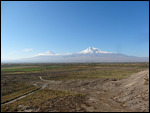

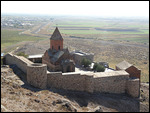






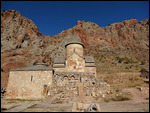
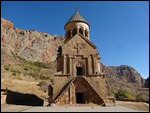
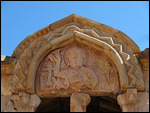
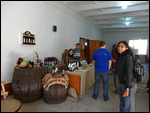

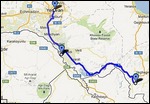
2025-05-22